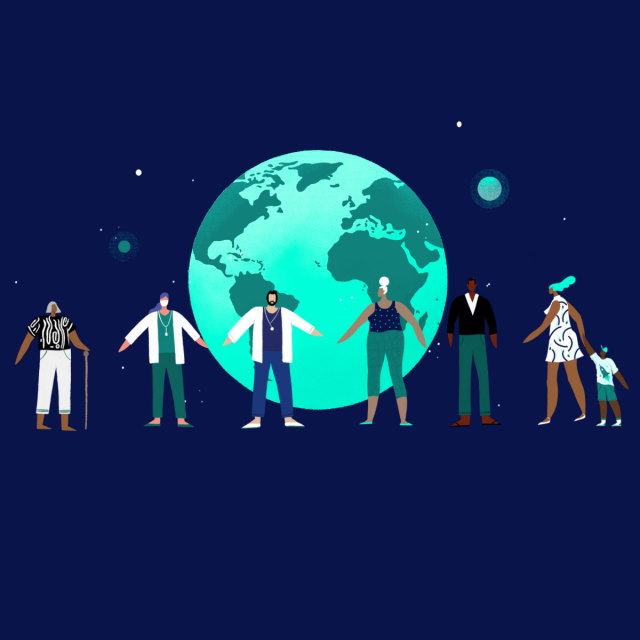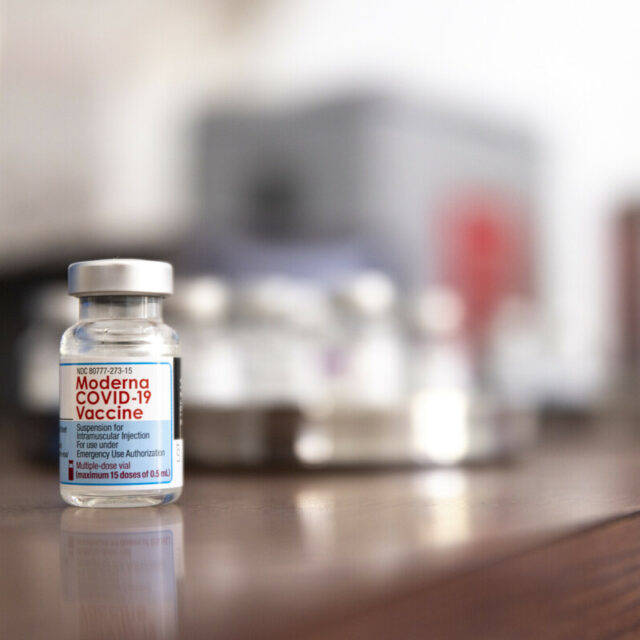A global crisis like the COVID-19 pandemic requires a unified, coordinated global effort to end the crisis. That’s where our ONE World campaign comes in. Our message? A global pandemic requires a global response. World leaders must agree on a global response plan and ensure that low-income countries are not left behind so that everyone, everywhere can see an end to the pandemic. In order to do so, we highlighted three important areas on which world leaders must agree and find comprehensive solutions:
- Protect vulnerable people, support essential workers and make care and treatment accessible to all.
- Support those who will be hardest hit financially.
- Strengthen health systems in order to better prepare for the next possible health crises.
Faced with a pandemic that respects no borders, have world leaders joined forces and shown solidarity to help end this global crisis? Here’s a look back at the progress so far and what still needs to happen in order to truly end the pandemic and build back stronger.
Ensuring access to tools to fight COVID-19
The Access to COVID-19 Tools Accelerator (ACT-A) is an innovative global collaboration aimed at accelerating the development, production, and distribution of diagnostics, treatments, and vaccines against COVID-19. It aims to ensure universal and equitable access and to strengthen health systems more comprehensively.
At the start of the pandemic, the creation of ACT-A was a needed first step in the pandemic response, and sparked hope that governments, international organizations, scientists, businesses, philanthropists, and civil society were ready to quickly join forces to face the pandemic. However, ACT-A is currently underfunded: So far US$11.1 billion has been committed — leaving more than US$22 billion still unfunded. Some countries, like Germany, the UK, Canada, and the US, have made notable commitments to this global partnership. Still, massive gaps exist from key actors, like France, Japan, China, and the EU. And time is running out.
Committing to COVAX for universal and equitable access to vaccines
Within ACT-A, there is a pillar that focuses more specifically on universal and equitable access to vaccines, called COVAX. Co-led by the World Health Organization, Gavi, the Vaccine Alliance, and the Coalition for Epidemic Preparedness Innovations (CEPI), and in partnership with UNICEF, this mechanism seeks to ensure access to COVID-19 vaccines for the populations who need it most. Never before have we needed to produce and ship such a large amount of vaccines around the world. But to end the pandemic, the discovery of a vaccine is not enough. Only when the world has achieved universal and equitable access to vaccines will it be possible to contain the virus.
This is why COVAX has set the objective of distributing at least 2 billion doses by the end of 2021 in priority to low- and middle-income countries. However, the mechanism quickly collided with vaccine nationalism in rich countries: at present, a handful of rich countries have purchased enough doses to vaccinate their entire population and still have more than 1.3 billion additional doses left. At the same time, COVAX has only been able to deliver 33 million doses to 74 countries, as of April. The result: less than 1% of the total doses administered worldwide so far have benefited the populations of the poorest countries.
Ensuring debt suspension and restructuring
The pandemic continues to drastically impact economies around the world. However, not all countries have the same means to deal with these effects. Rich countries have taken unprecedented steps to keep their economies afloat, while the poorest countries, especially in Africa, have dedicated a larger part of their budget to repaying their debts than to fighting the effects of the pandemic. This two-tier policy is unfair and will only worsen the economic impacts of the pandemic for everyone.
In April 2020, the G20 agreed on a suspension of the repayment of the debts of the most vulnerable countries. The initiative was extended twice, first until the end of June 2021, and then until the end of 2021. It saved 43 countries a total of $5.7 billion in 2020, and is set to free up $17 billion in 2021. However, so far the initiative has only applied to country-to-county debt, meaning that the private sector and multilaterals like the World Bank have not taken part. If they did, it would save countries an additional US$12.5 billion and US$13.7 billion in 2021, respectively.
Currently, over 30 vulnerable countries that are eligible for debt suspension are either in debt distress or at high risk of it, with roughly two-thirds of these in Africa. Debt distress causes economic turmoil and has more long-lasting effects on growth and development. In November 2020, the G20 announced a Common Framework for the restructuring of unsustainable debts of poor countries. In order to be successful, the G20 must now ensure that all lenders (especially the private sector) take part, and improve the transparency of debt, so that vulnerable countries get a fair and comprehensive agreement.
Allocating billions in Special Drawing Rights
Apart from the suspension of debt, world leaders and international institutions can use other measures to prevent a collapse of economies. Special Drawing Rights (SDRs) are international reserve assets created by the International Monetary Fund (IMF) to supplement the existing official reserves of member countries. They can be traded in for foreign currency during financial crises. They were used in particular during the 2009 financial crisis to support economies. In March 2021, the IMF Board announced support for a new allocation of US$650 billion in SDRs. This is an important first step to enable the countries most affected economically to face the crisis. Here’s more on how SDRs work.
Now, we have to go further: SDRs are distributed among countries according to their quota in the IMF, which is essentially based on the size of countries’ economies. In other words, richer countries will receive the majority of the SDRs, while the poorest countries will receive only a small part, even though the poorest countries need these additional resources the most. The IMF’s richest member countries must now agree on a fair redistribution of these SDRs, by re-allocating them to low-income countries.
Understanding that prevention is better than a cure
On March 29, 2021, 26 heads of state and government called for the need for a new international treaty on pandemic preparedness and response in order to “respond effectively and in a perfectly coordinated manner.” And they’re right: all the way back in April 2020, we calculated that world leaders had already spent 500 times more on their pandemic response plans than the recommended global annual sum to prepare for pandemics. Just over a year into the pandemic, rich countries have spent US$14 trillion to fight the pandemic, or 1,400 times more than what is needed for pandemic preparedness.
That’s why world leaders and international organizations must work together not only to create a unified global response to COVID-19, but also to better prepare for future pandemics. We need to strengthen global health systems and build the capacity of all countries to prevent, detect, and respond to global health threats, so that we’re ready if this happens again.
COVID-19 has proven that none of us are safe until all of us are safe, and that our existing institutions and rules need an upgrade to tackle 21st-century challenges. The world must stand together to tackle this pandemic everywhere, and then respond to the imperative to create a more just and equal world.



